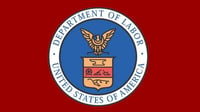 On June 8th, 2016 Retirement Clearinghouse (RCH) and the Employee Benefit Research Institute (EBRI) teamed up to present consolidated testimony to the ERISA Advisory Council on Auto Portability, the automation of plan-to-plan transfers for small accounts, when participants change jobs.
On June 8th, 2016 Retirement Clearinghouse (RCH) and the Employee Benefit Research Institute (EBRI) teamed up to present consolidated testimony to the ERISA Advisory Council on Auto Portability, the automation of plan-to-plan transfers for small accounts, when participants change jobs.
The testimony (here) was presented jointly by Tom Johnson, RCH’s EVP and Head of Policy Development, and Craig Copeland, EBRI’s Senior Research Associate. Johnson and Copeland not only addressed the basics of Auto Portability -- what it is, why it’s needed and how it works – but also covered the latest key research findings and EBRI data that are highly-supportive.
In his portion of the testimony, Johnson addressed the Auto Portability model and covered the key research initiatives -- building upon each other – that have steadily advanced the case for Auto Portability, including:
- 2013 Boston Research Group Case Study
- Analysis of “Do-it-Yourself” Plan-to-Plan Transfers
- Operational Experience: “Report from the Front Lines”
- Boston Research Technologies-RCH Mobile Workforce Study
- Auto Portability Simulation (APS) Model
Diving deeply into the EBRI database, Craig Copeland went on to provide the Council with empirical support for Auto Portability, including:
- The size and projected growth of defined contribution participants, through 2045
- The breakdown of participants, by account balance, and the associated employer turnover within each balance segment
- The overall annual size of the mobile workforce, including those under $5,000 who would be affected by Auto Portability
- Components of cashout leakage, including “fast” leakage (at job change) and “slow” leakage (in years subsequent to job change)
Overall, the joint RCH-EBRI testimony before the ERISA Advisory Council represents the most credible, comprehensive and complete case to date for Auto Portability – and is sure to be referenced by public policy makers in the weeks ahead.
